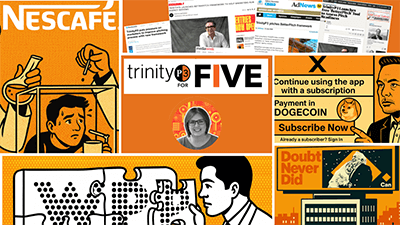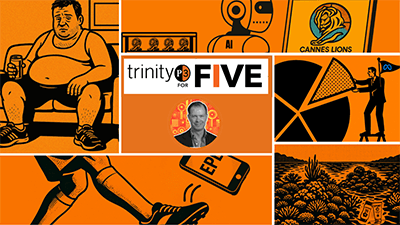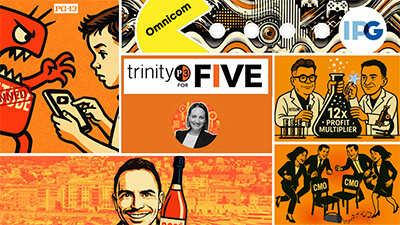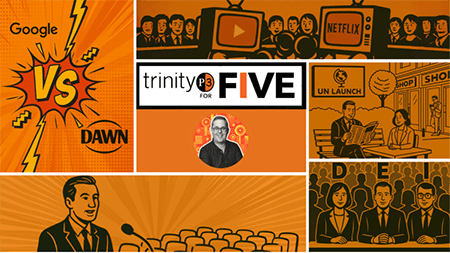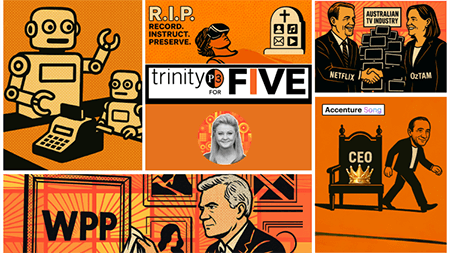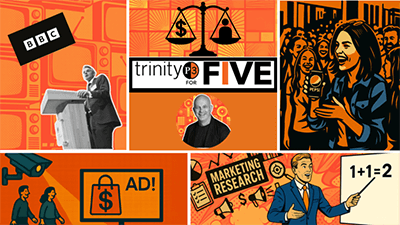TrinityP3 for FIVE Newsletter
The five essential stories of the week and why they matter

Each week TrinityP3 curates the TrinityP3 for FIVE newsletter which gives you the five things you should read this week. The newsletter is a digest which comes every Sunday and gives you five minutes of reads to prepare you for the week ahead.
Our Latest Podcast:

Managing Marketing: The Benefit And Challenges Of Owning Your Own Agency
Jacquie Alley is the Chief Operating Officer of Mediastore and the Chair of Independent Media Agencies Australia (IMAA). Margie Reid is the Chief Executive Officer of possibly the most talked-about agency in the market, Thinkerbell. Together, they represent two distinct paths to owning and managing an independent agency business. Jacquie ...

